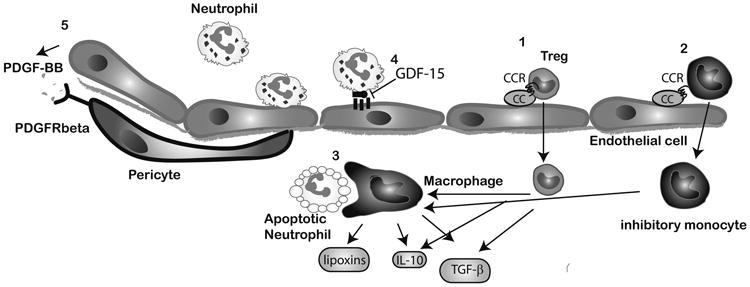Figure 2.

Cellular events associated with negative regulation of the post-infarction inflammatory response. Recruitment of inhibitory mononuclear cell subpopulations in the infarcted myocardium, such as Tregs (1) and inhibitory monocytes (2) may require activation of specific chemokine/chemokine receptor interactions. Macrophages acquire an anti-inflammatory phenotype and secrete inhibitory mediators upon phagocytosis of apoptotic neutrophils (3). Endothelial cells may participate in suppression of the inflammatory response (4) by producing mediators that inhibit adhesive interactions with leukocytes (such as GDF-15). Acquisition of a pericyte coat by infarct neovessels (5) may also suppress inflammatory activity and is mediated through PDGFR-b/PDGF-BB interactions.
